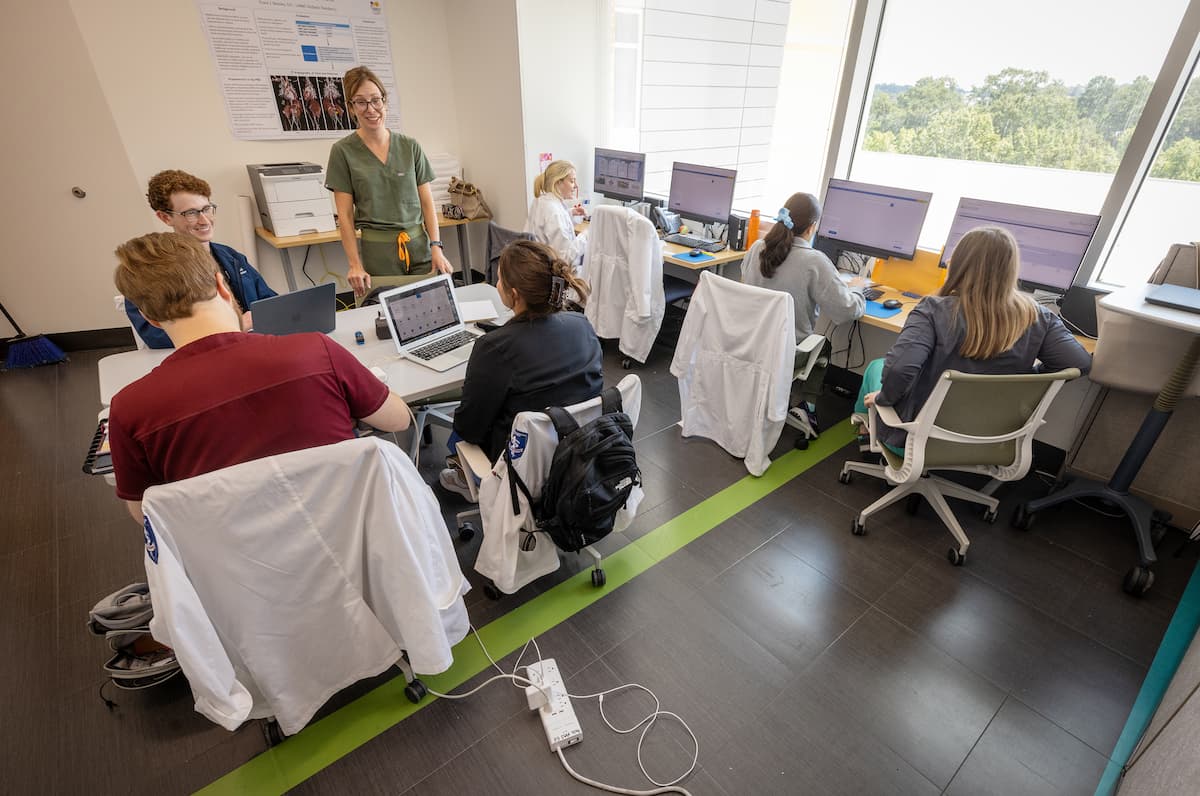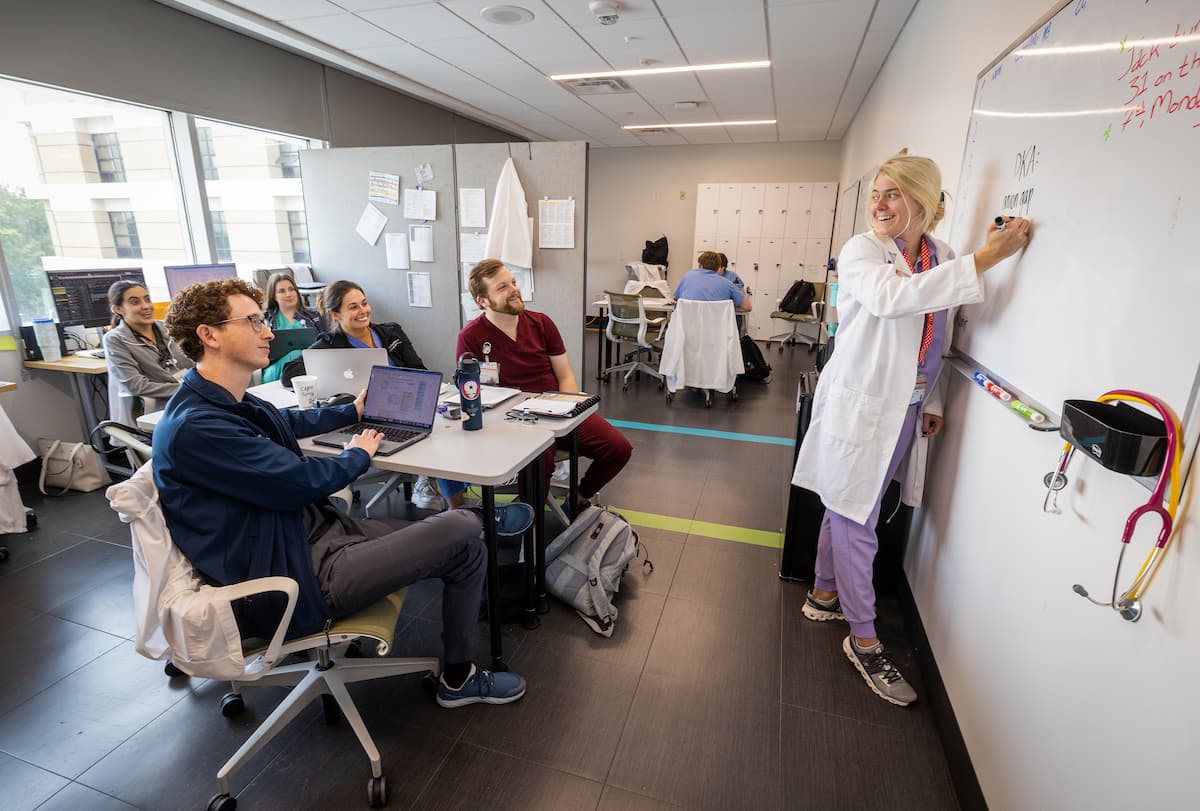Pediatric team rooms built for educational collaboration

Now medical students and pediatric and med-peds residents have space for the Department of Pediatrics’ four teams to collaborate, study or just get a cup of coffee. Two conference rooms in the Sanderson Tower have been converted to space for pediatric education.
The large conference tables are gone. In their place are workstations and partitions, white boards and lockers. A coffee maker and microwave oven give students and residents a place to take a break for a quick meal.
“This gives students and residents a place to collaborate on the Sanderson side of the children’s hospital,” said Dr. Kimberly Paduda, professor of pediatrics.
The teams’ spaces are on the third floor of the Sanderson Tower, steps away from a connector hall between the Sanderson Tower, where neonatal and intensive care patients are, and the Batson Tower’s hospital inpatient floors.
“This area is close to both Sanderson and Batson Towers, so it’s convenient for everyone,” Paduda said.
The new meeting space is adding to the educational experiences of medical students and residents, said resident Dr. Sophia Jaffri. “We’re grateful for this space. Here, our teams can communicate, and we have the space we need in close proximity to patients.”
This means that teams are close to the units where they will be rounding each day, allowing them to be closer to their patients.
The teams, each made up of up to four medical students as well as three to four pediatric or med-peds residents, round together to suggest treatment plans for consideration. Attending physicians teach medical students and residents while on rounds, but now they also have an area where they can discuss care with team members away from hospital hallways.



